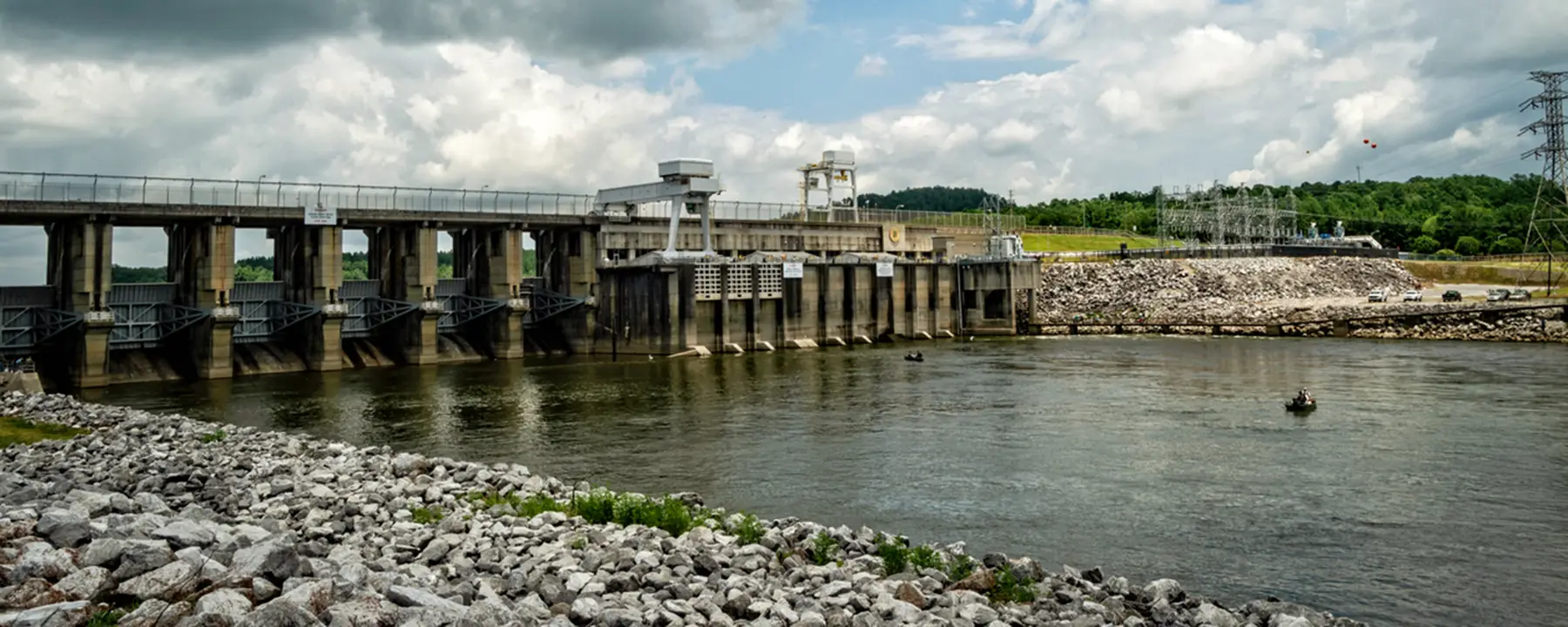Using real-time data integration for better water management systems
Objective
To enhance real-time decision support tools for improved water management.
Approach
We helped Alabama Power develop a better forecast system by applying the Delft-FEWS (Flood Early Warning) platform and RiverWare model to three river systems and 14 reservoirs in Alabama.
Impact
The new forecasting system offers real-time data integration, visualization, and modeling, allowing the reservoir management group to schedule operations at a faster and more accurate rate.
The Importance of Hydrologic Forecasting Systems
In the era of climate change, water infrastructure is being strained like never before. Both extreme rainfall events and severe droughts are increasingly common. Water managers find themselves responsible for using dams to maintain river and reservoir levels in this challenging environment. Meanwhile, hydropower facilities at dams are often an overlooked source of clean energy that can help offset carbon emissions, particularly at times of peak energy demand.
With rainfall either too plentiful or too scarce, outdated hydrologic forecasting systems simply don’t measure up. Both people and the environment benefit when we can keep rivers flowing, store water for times of need, and generate clean energy. To reap these benefits, water managers require tools that allow them to visualize and assess real-time data combined with inflow simulations tied to weather forecasts. Unprepared or outdated water management systems can lead to devastating financial loss and in the worst case, human fatality.
Modernizing Hydrologic Forecasting
The Reservoir Management Group of Alabama Power, a subsidiary of Southern Company, sought new technology to upgrade their operational inflow forecasting and reservoir management tools. In 2019, Alabama Power representatives visited Tennessee Valley Authority’s (TVA) River Forecasting Center, where RTI is a longstanding partner in supporting their hydrologic forecasting and risk-informed decision making. Inspired by TVA’s system, Alabama Power collaborated with RTI experts to identify three areas of existing concern and how they might move forward to improve forecasting and operations. These pain points included:
- A lack of flexibility and integration between existing models and systems
- Real-time reservoir modeling challenges
- Hydrologic modeling limitations for extended or complex events
Working collaboratively with RTI, Alabama Power elected to move forward with an upgraded system that followed a blueprint established from TVA. This included leveraging the Delft-FEWS platform that combines data sets, visualization tools, models, and reports in an integrated and scalable real-time system. Operational reservoir modeling challenges were addressed by integrating a RiverWare model to handle both manual simulated releases defined by staff and rules-based operations for guidance. Hydrologic modeling was improved by incorporating the same models utilized for operational forecasting by the U.S. National Weather Service River Forecast Centers.
Integrating New Operational Platforms
Throughout the initial development, RTI worked closely with Alabama Power to develop the models and system that would meet all their existing needs while streamlining previous tedious tasks. Regular collaboration between the two groups was essential to ensure an end product where Alabama Power could feel true ownership. As the Reservoir Management staff capacity developed with the new system, new ideas evolved and were dynamically incorporated.
The result is a system that models three separate rivers with a total of 70 sub-basins and 14 reservoirs. Multiple operators can access the system at the same time and work in parallel within different river systems, streamlining operations during extreme events. Similarly, the continuous hydrologic models allow for manual forecaster adjustments to be made within minutes – an improvement over previous models that could take hours to update during fast changing, intense rainfall events. Reservoir releases can be made on the fly and easily reviewed with real-time updates to observed and forecast inflows within the integrated platform.
Forecast System Enhancements
Based on the success of the initial project, completed in the summer of 2021, Alabama Power has continued to work with RTI to enhance their system. This includes:
- Upgrades to the RiverWare model to run reservoir operations independently in simulation mode.
- Integrating and updating additional sub-basins, forecast points, and reservoirs in the Black Warrior River system.
- Developing alternative scenarios to compare the impact of reservoir operations with varying amounts of rainfall (e.g. no forecast rain vs forecast rain vs doubling the forecast rain).
- Updating the RiverWare rules-based model to better align with operational management objectives during flooding events.
- Testing, debugging, and updating various models and systems based on the reservoir management review and operational use.
As an operational entity, Alabama Power’s Reservoir Management group often has limited time outside their daily forecasting and operational duties to build and develop new features to their system. Our team is proud to support these developments when needed and play a role in ensuring optimal operations during extreme events exacerbated by climate change.
Learn More about RTI’s Center for Water Resources and capabilities in hydrologic forecasting.
- Southern Company / Alabama Power




